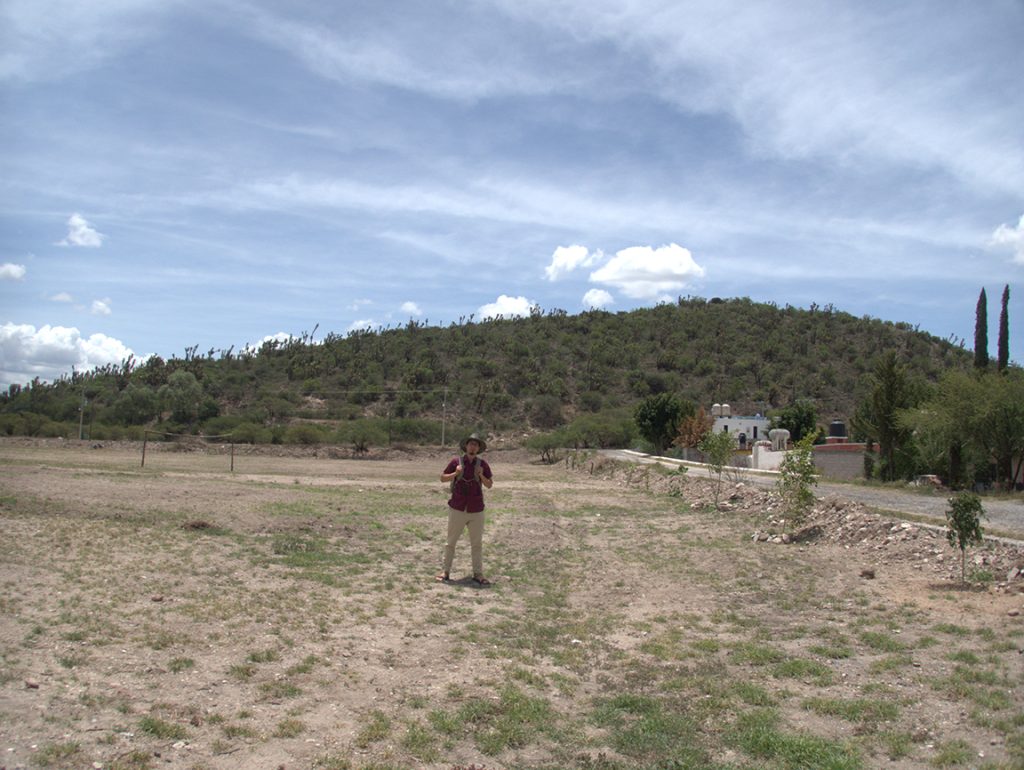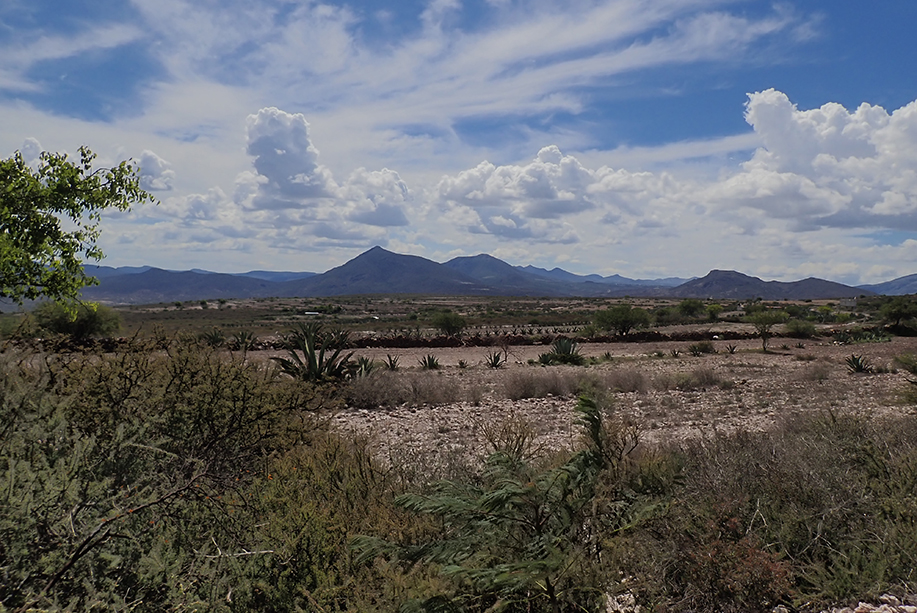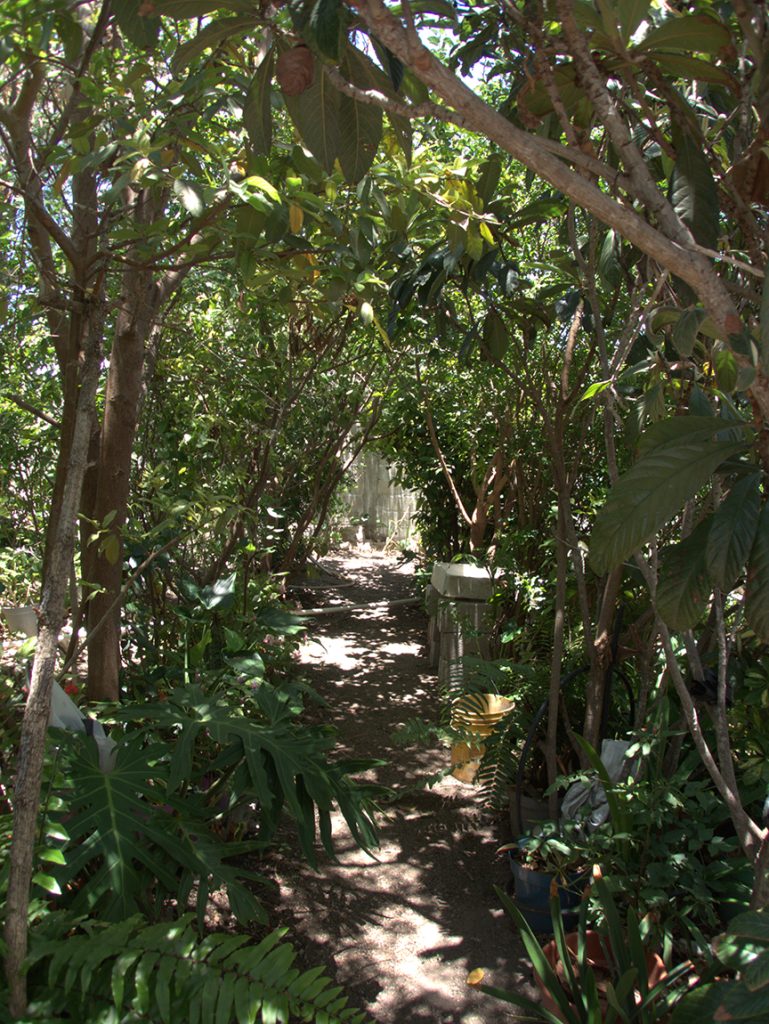Gonzalo Martínez Herrera 2023 Field Report

With the argument of meeting energy demands by cities and industries, hydroelectric infrastructure has reshaped geological features, and erased, introduced, or displaced ecological communities throughout the planet. Natural and social scientists have studied the consequences of hydroelectric projects, frequently reporting disarticulations of ecological communities by physical fragmentation of the environment, disruption of ecological processes, and tearing of social fabrics and livelihoods that depend, interact, and assign meanings to such environments. My research revisits the aftermath of the Zimapan Dam, the last hydroelectric megaproject of the twentieth century constructed in Mexico using the epistemological tools of post-humanism and more-than-human geographies. By concentrating on the human-plant relationships, the study aims to understand the role of these relationships in the symbolic and material construction of places after being resettled from original communities and explore how are these relationships are developed and cared for in daily routines.
During July and August of 2023 I conducted semi-structured interviews and botanical photographic sampling as part of the initial phase of my doctoral research. During the first half of July, I visited Bella Vista del Río, where I recruited research participants using a snowball sampling method. Based on previous contacts and suggestions from participants in Bella Vista, I visited four communities in Hidalgo, Algibes, Nuevo Algibes, San Pedro, and Tzidejé to recruit research participants (Table 1).
Table 1: Number of interviews conducted by community.
| State | Community | Interviews (N) |
| Querétaro | Bella vista del Río | 17 |
| Hidalgo | Algibes | 3 |
| Hidalgo | Nuevo Algibes | 6 |
| Hidalgo | San Pedro | 8 |
| Hidalgo | Tzidejé | 3 |
Interviews ocurred in participants’ homes, home gardens, or milpas (agricultural plots).
After introducing myself and explaining the study’s background and objectives, I requested participant’s consent to record the interview and continued to explain how I will use their information. Conversations delved into participants’ memories and perceptions of how the resettlement process unfolded, impacted their livelihoods, and transformed their relationship with plants. The first part of the conversation usually induced a melancholic mood swing in people from Bella Vista and Nuevo Algibes. This resulted from remembering the ecological richness of their previous communities resulting from a warm and humid microclimate that guaranteed two successful harvests annually and the availability of multiple species of trees that provided food throughout the year. Participants from the rest of the communities did not consider that the dam altered their livelihoods in an radical way, thus noting that it affected them by increasing the distance and time to arrive to their relocated milpas and the social conflicts that emerged with water distribution.

The section of human-plant relationships focused on exploring these relationships material and symbolic relevance for people and how it helped them adapt to their new communities. Results suggest that people have been trying to develop and maintain the emotional ties with the same species or individual plants that existed in their old towns. However, this has been became more difficult due to changes in ecological and financial conditions. To investigate which features contribute to plants’ plantiness in home gardens and milpas, I asked interviewees about plants’ performance and behaviors like flowering, fruit development, and vegetative growth. Conducting the interview in participants’ gardens or fields facilitated observing how people interacting directly with the plants, and creating a space where I could ask about the symbolic and emotional ties with the plant developed in their everyday routines. Results suggest that people appreciate plants mainly to their ability to provide food, shade, aesthetic pleasure, and emotional support by talking and touching their plants. Plants’ relevance was evidence by the determination of interviewees to transplant their trees from the previous communities to continue their bond even after 30 years.

After each interview, I took photographic samples (following (Greene et al., 2023)) of vegetal structures like flowers, leaves, stems, fruits, and complete individuals (Figure 1). Additionally, I took photos of home gardens or sections of the gardens that reflected a pattern designed by research participants (Figure 2 and Figure 3).
Please see the full report here.


















